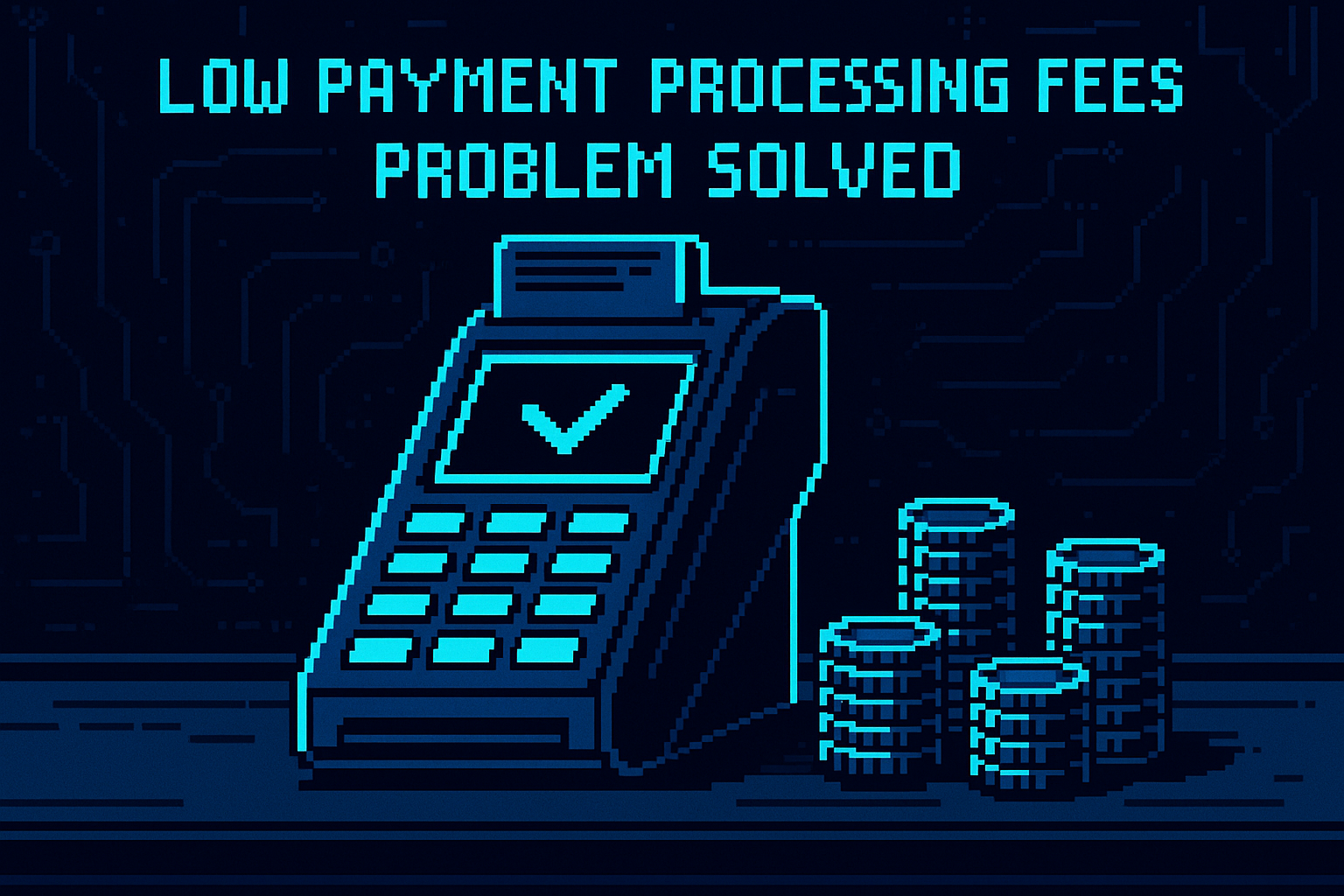Choosing the right payment API is crucial for SaaS businesses looking to streamline recurring billing and scale effectively. Here's a quick breakdown of what to consider and the top options available:
Key Considerations:
- Billing Models: Support for subscription-based, usage-based, tiered, or hybrid pricing.
- Developer Tools: APIs with detailed documentation, webhooks, SDKs, and no-code options for easier integration.
- Compliance: Ensure PCI DSS compliance, automated tax handling, and fraud prevention for U.S. operations.
- Customer Features: Self-service portals, proration for mid-cycle changes, and automated dunning to reduce churn.
- Cost: Compare transaction fees, monthly charges, and total cost of ownership.
Top Payment APIs:
- Stripe: Flexible billing logic with global reach; ideal for businesses of all sizes but requires technical expertise.
- Chargebee: Automates subscription management and offers advanced dunning; suited for mid-to-large SaaS companies.
- Recurly: Focuses on churn reduction and revenue optimization; great for enterprise SaaS.
- Paddle: Handles tax compliance and fraud prevention; simplifies international operations.
- LemonSqueezy: Easy setup for smaller SaaS businesses, with built-in tax handling.
- Zoho Billing: Budget-friendly option starting at $25/month, integrates well with Zoho's ecosystem.
- Maxio: Custom pricing for complex billing needs, including usage-based models.
- Mollie: Strong focus on European markets with local payment options.
Quick Comparison:
| Payment API | Starting Price | Transaction Fees | Best For | Key Features |
|---|---|---|---|---|
| Stripe | Free to start | 2.9% + $0.30 per transaction | SaaS of all sizes | Global reach, flexible billing logic |
| Chargebee | Custom pricing | Varies by plan | Mid-to-large SaaS companies | Advanced subscription management |
| Recurly | Custom pricing | Varies by plan | Enterprise SaaS | Churn reduction, detailed analytics |
| Paddle | Free to start | 5% + processing fees | International SaaS | Tax compliance, fraud prevention |
| LemonSqueezy | Free to start | 5% + processing fees | Small SaaS businesses | Easy setup, built-in tax handling |
| Zoho Billing | $25/month | Standard rates | Small businesses | Budget-friendly, Zoho integrations |
| Maxio | Custom pricing | Based on billing volume | Complex billing needs | Usage-based models, custom reporting |
| Mollie | Contact for pricing | Contact for rates | European SaaS | Local payment methods, RESTful APIs |
Final Thoughts:
Stripe is a solid choice for flexibility and scalability, while Paddle simplifies compliance for global SaaS. Chargebee and Recurly cater to businesses with complex billing needs, and LemonSqueezy offers simplicity for smaller teams. Evaluate your pricing models, technical resources, and growth plans to find the best fit.
If I Vibe Coding a $100k/Month Saas, I will use only these 2 Best Payment processors
How to Choose a Payment API for SaaS Recurring Billing
Selecting the right payment API is a critical decision that impacts your billing flexibility, customer satisfaction, and overall revenue. Here’s what to consider when making your choice.
Billing Models and Customization Options
Your payment API should align with your business's billing needs. SaaS businesses often require more than simple monthly subscriptions. Look for an API that supports:
- Subscription-based billing (monthly or annual plans)
- Usage-based pricing (metered or per-seat)
- Tiered pricing structures
- Hybrid models (combining flat fees with overage charges)
Flexibility is key when experimenting with pricing strategies. A good API should allow for features like coupons, discounts, free trials, add-ons, and automatic adjustments for upgrades or downgrades. These capabilities enable you to test different approaches without overhauling your billing system.
Integration and Developer Tools
A smooth developer experience can save time and reduce costs. Prioritize APIs that offer comprehensive tools, webhook support for real-time updates, and a modular design for easier integration. If your team includes non-technical members, consider APIs with no-code options and user-friendly dashboards. These features let marketing or finance teams create pricing plans, manage promotions, or generate reports without needing developer assistance.
Pre-built integrations with CRMs, ERPs, or accounting software are also valuable, as they reduce development time and ensure compatibility with your existing tools.
US Market Requirements
If you’re operating in the US, your payment API must meet specific compliance and operational needs. Look for features like:
- Support for USD transactions
- Automated tax calculations to manage sales tax variations across states
- PCI DSS compliance with tokenization, encryption, and two-factor authentication
- Fraud prevention tools to meet regulatory standards
Additionally, APIs that handle prorations and refunds seamlessly when customers change plans mid-cycle can enhance customer satisfaction and ensure accurate revenue tracking.
Customer Management and Analytics
A strong payment API should also simplify customer management. Self-service options, like customer portals, allow users to upgrade or downgrade plans, update payment details, and check billing history - reducing support demands while improving the user experience.
Analytics and reporting tools are essential for tracking metrics like Monthly Recurring Revenue (MRR), Annual Recurring Revenue (ARR), and customer lifetime value (LTV). These insights help you monitor performance and identify trends. Automated dunning features, such as smart retries and payment reminders, are also critical for recovering revenue and reducing churn caused by failed payments.
Pricing and Transaction Fees
Transaction fees can significantly impact your margins, especially for lower-priced SaaS products. Compare APIs based on both percentage rates and fixed fees per transaction.
Also, consider the total cost of ownership. Some APIs include monthly fees, setup costs, or additional charges for features like advanced analytics or priority support. Transparent pricing is essential for accurately forecasting expenses and setting subscription rates.
For a detailed comparison of features, pricing, and capabilities tailored to SaaS businesses, resources like Choose a Payment Provider for Your SaaS can provide valuable insights.
Best Payment APIs for Recurring Billing
Here’s a look at some top payment APIs that stand out for managing recurring billing effectively.
Stripe
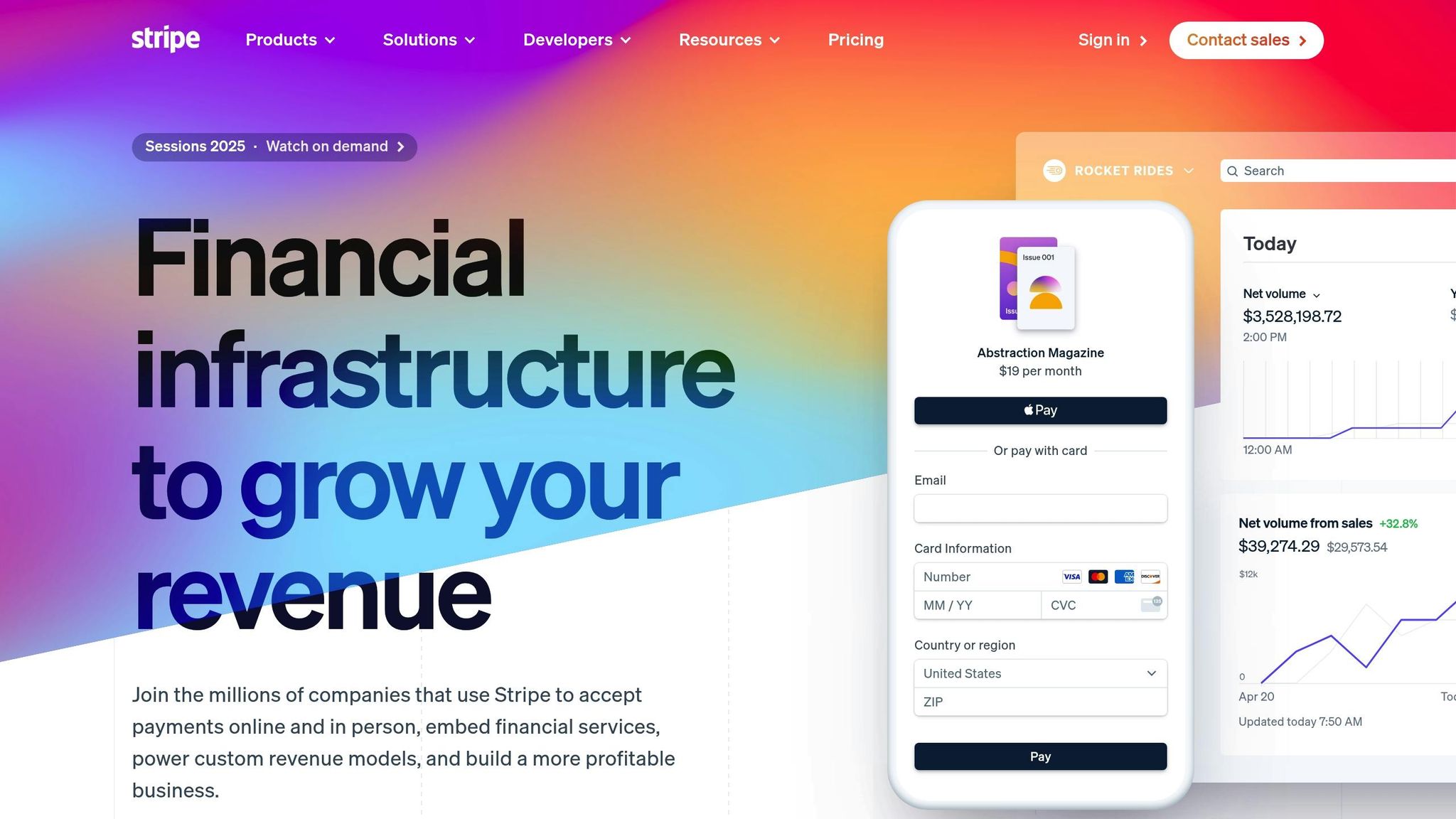
Stripe is known for its developer-friendly API, which supports everything from simple monthly subscriptions to more complex, usage-based pricing structures. With features like hybrid models, seat-based adjustments, and tailored billing logic, Stripe offers flexibility through its webhooks and detailed documentation. Subscribers can manage their accounts directly using the customer-facing Billing Portal. The pricing is straightforward, with standard transaction fees for U.S.-based cards and no monthly charges. However, setting up a fully customized billing system may require a good amount of technical expertise.
Chargebee
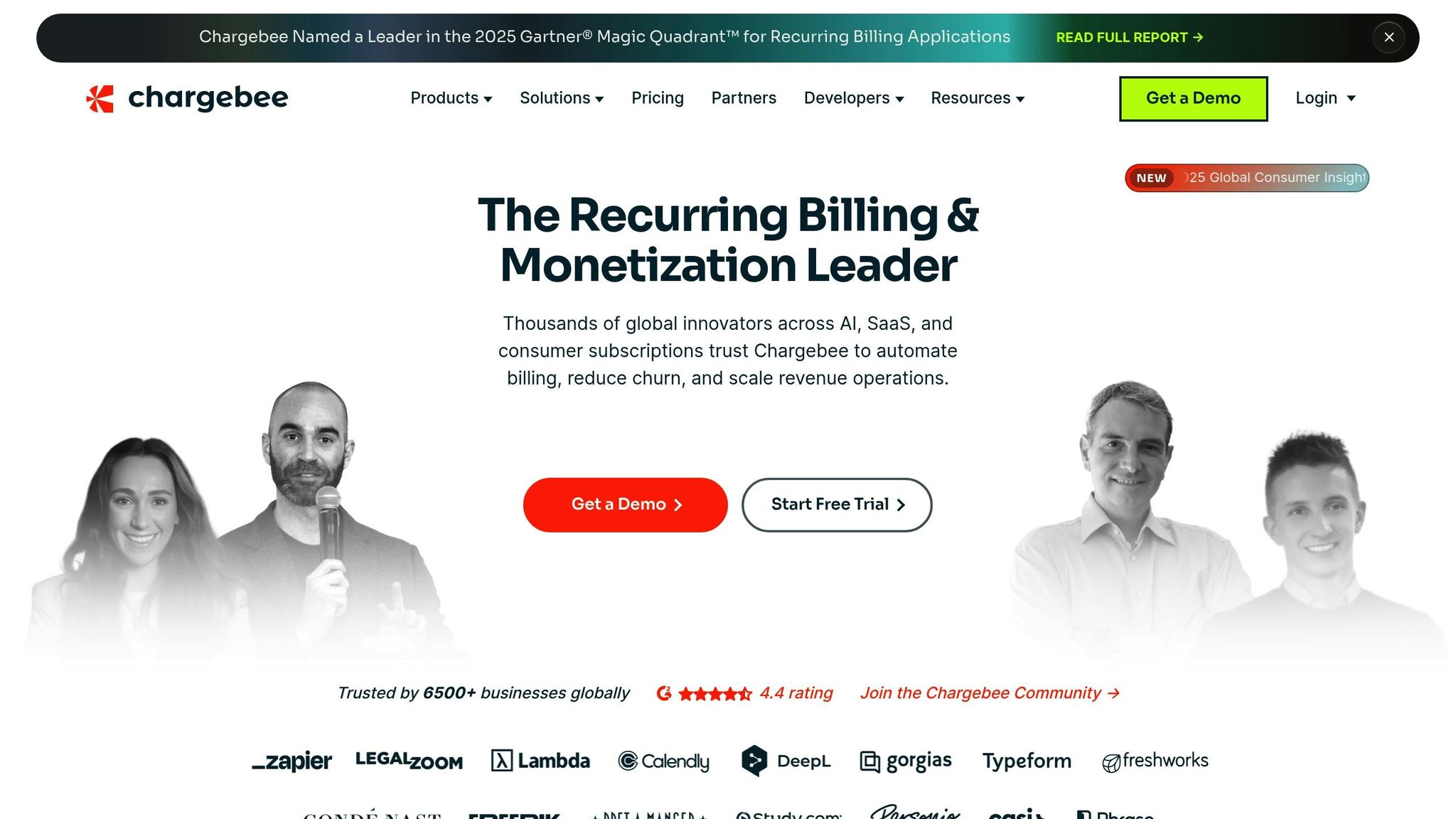
Chargebee simplifies billing automation, making it a great choice for businesses without extensive in-house coding resources. It handles the entire subscription lifecycle, including proration and discount management. Its dunning system uses advanced logic to optimize payment retries, while the dashboard provides real-time insights like monthly recurring revenue, cohort analysis, and churn tracking. Chargebee offers a tiered pricing model, including a free tier for lower-volume businesses and paid plans for larger operations. Its efficiency is particularly useful for managing recurring billing workflows.
Recurly
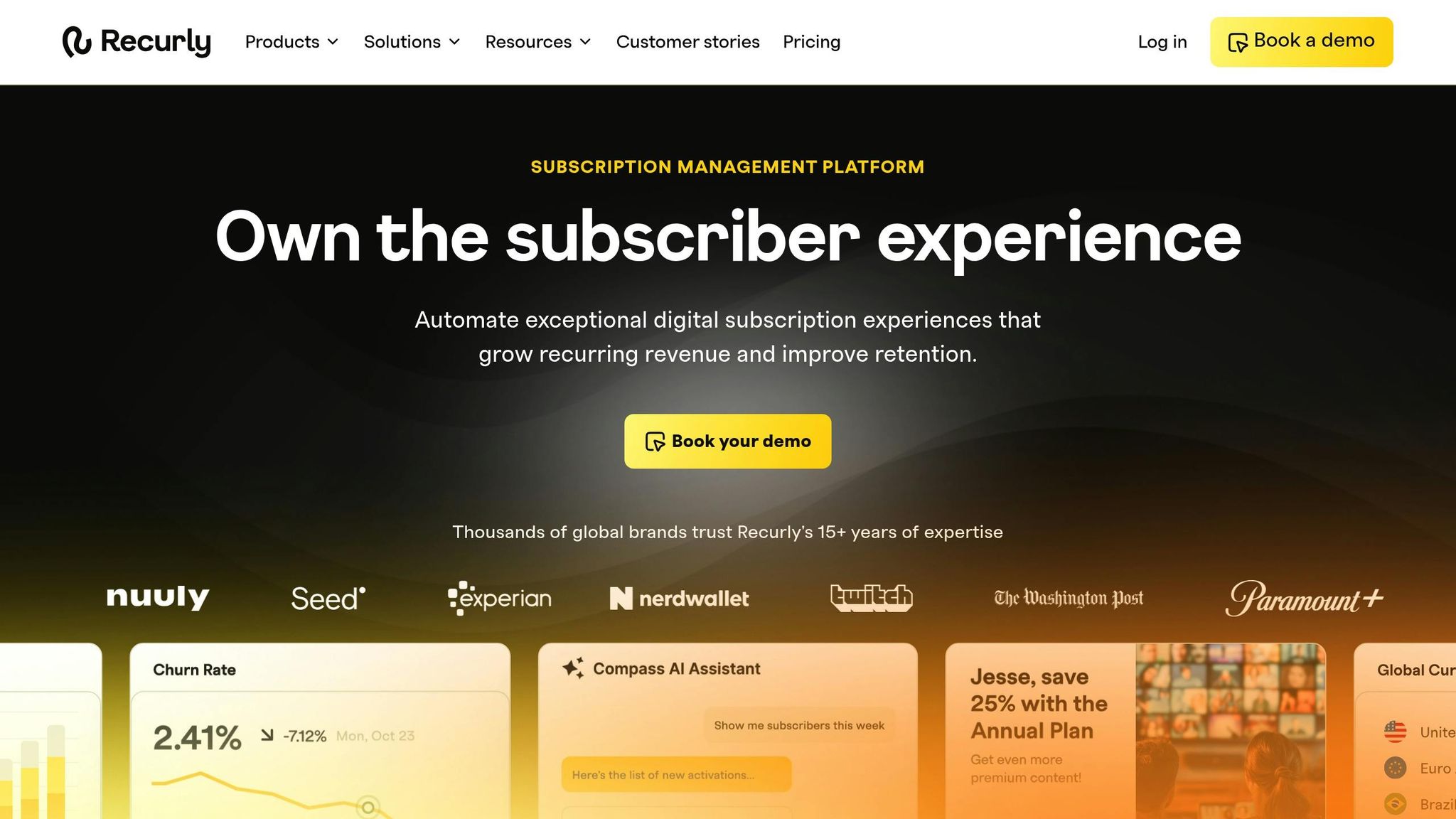
Recurly is built to help mid-sized SaaS companies tackle payment failures and customer retention issues. Its user-friendly interface allows non-technical teams to manage pricing, campaigns, and reporting with ease. Pre-built integrations with popular SaaS tools simplify the setup process. Recurly also excels in revenue optimization, offering adaptive payment retries, automated re-engagement campaigns, and in-depth analytics to identify at-risk customer segments. Its competitive pricing and ease of use make it a solid option for recurring billing needs.
Paddle

Paddle acts as the merchant of record, handling tax compliance, fraud prevention, and regulatory requirements. This makes it an excellent choice for U.S.-based SaaS companies looking to expand internationally or reduce compliance burdens. Paddle automates tax calculations and remittances across multiple jurisdictions and supports both one-time and recurring payments. The checkout process is optimized for conversions with localized payment options. By bundling tax management, fraud prevention, and customer support into one pricing model, Paddle offers a streamlined approach for businesses.
LemonSqueezy
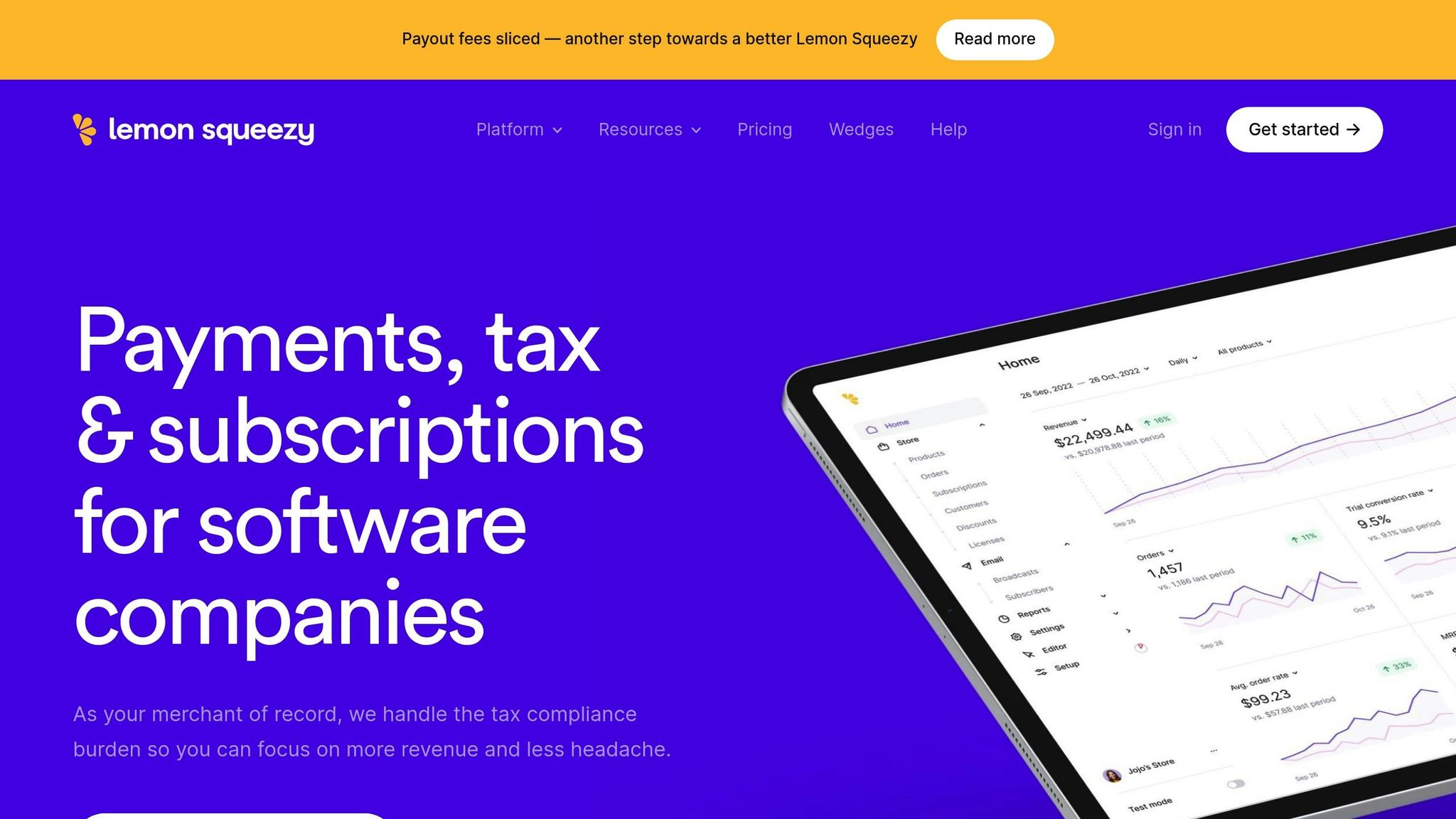
LemonSqueezy is tailored for smaller SaaS businesses and solo entrepreneurs in need of straightforward recurring billing solutions. It goes beyond basic payment processing with features like affiliate management and digital product delivery. The platform supports multiple subscription tiers, automatic proration for plan changes, and basic dunning for failed payments. Subscribers can easily update payment methods and access invoices through the customer portal. While its integration process is simple thanks to available SDKs, LemonSqueezy may lack the advanced analytics and scalability that larger, fast-growing SaaS businesses might require.
sbb-itb-a989baf
Other Payment APIs Worth Considering
Beyond the top payment APIs, there are several other options that cater to specific needs, especially for SaaS businesses with unique billing requirements. These APIs provide features like recurring billing and flexible pricing plans, making them suitable for businesses with evolving demands. Here's a quick look at a few alternatives:
Zoho Billing
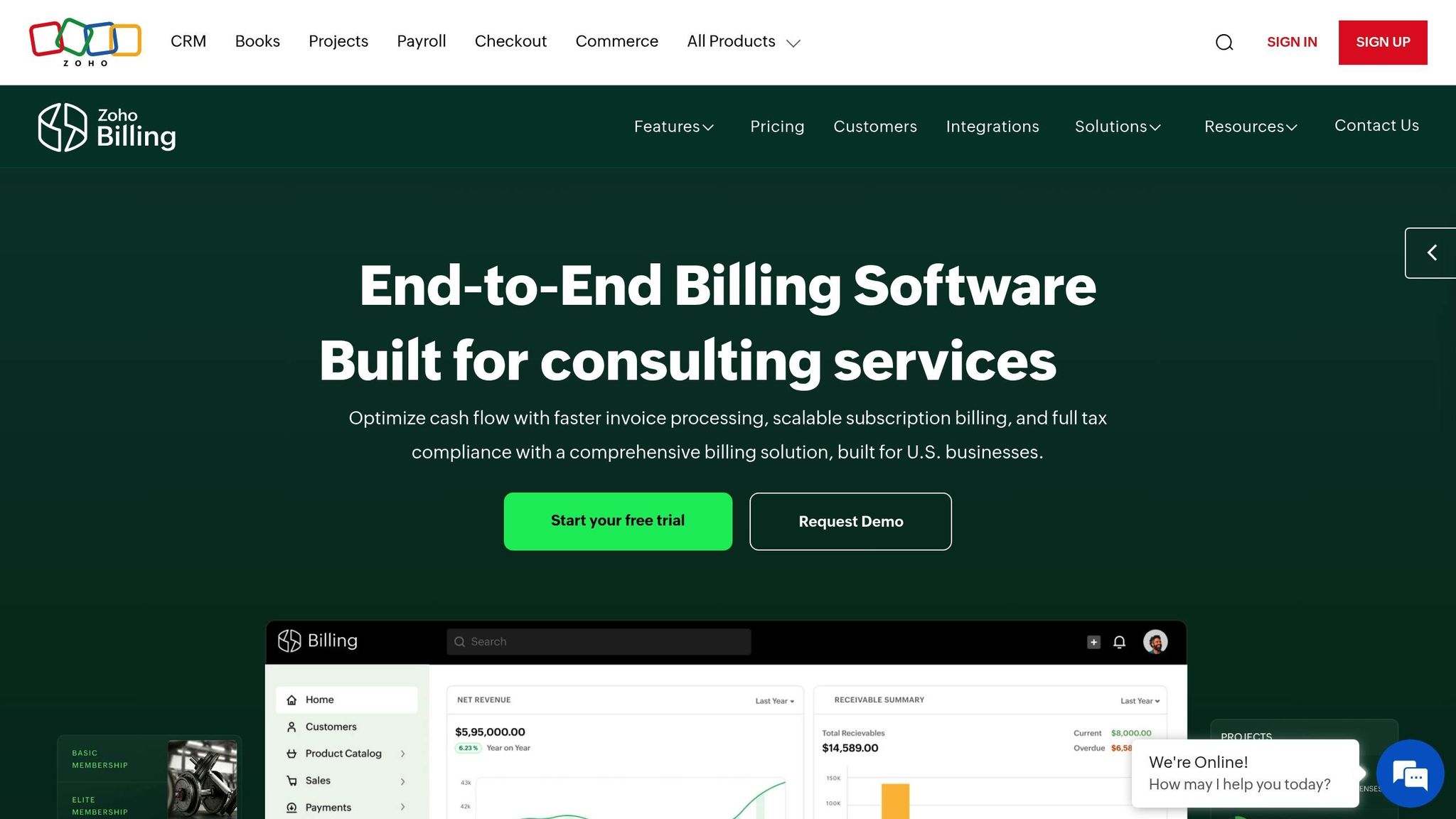
Zoho Billing offers a Basic plan starting at $25 per month, making it a budget-friendly choice for small and medium-sized SaaS businesses. For those with higher demands, Zoho also provides Standard and Premium plans, which come with increased limits on invoices and supported payment gateways.
Maxio (formerly Chargify)
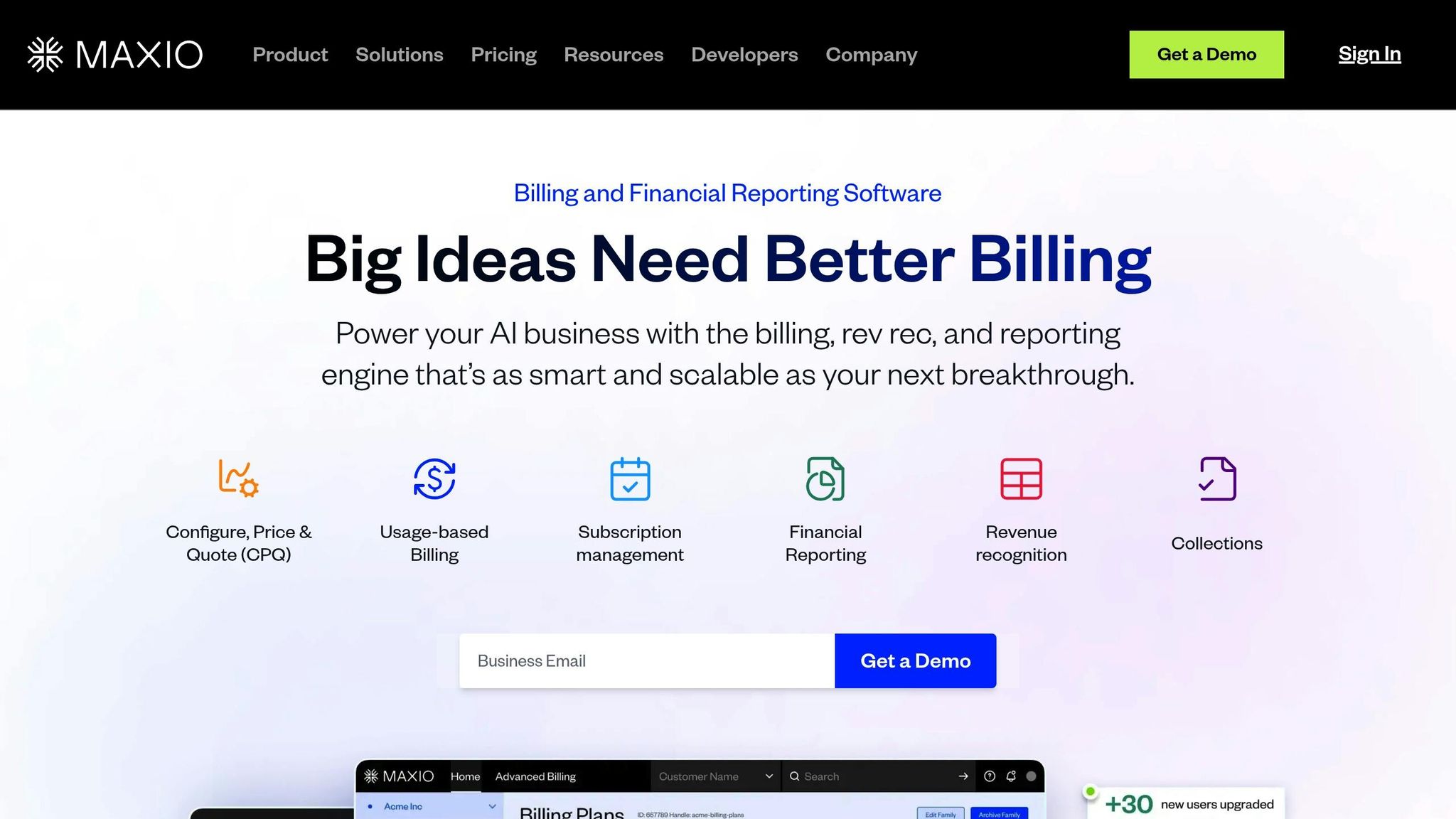
Maxio operates on a custom pricing model based on billing volume, making it a strong contender for SaaS companies with more intricate billing needs.
Mollie
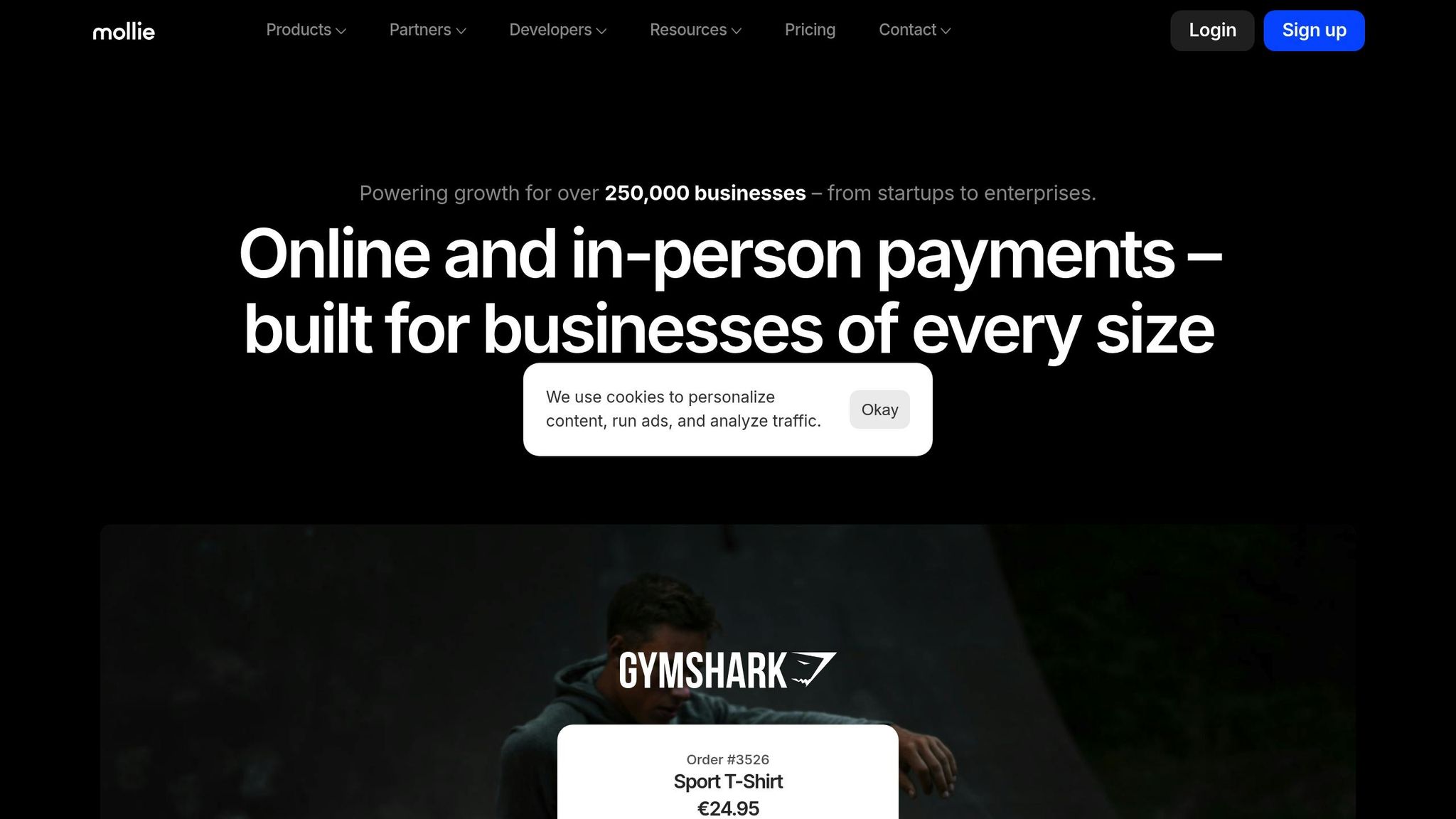
Mollie keeps its pricing information private, so you'll need to contact them directly for details.
Payment API Comparison Table
Here's a side-by-side look at key features, pricing, and capabilities of popular payment APIs. Use this table to quickly compare options based on your needs.
| Payment API | Starting Price | Transaction Fees | Key Strengths | Best For | Developer Tools |
|---|---|---|---|---|---|
| Stripe | Free to start | 2.9% + $0.30 per transaction | Extensive documentation, global reach, flexible billing | SaaS of all sizes, international businesses | Comprehensive APIs, webhooks, testing tools |
| Chargebee | Custom pricing | Varies by plan | Advanced subscription and dunning management | Mid to large SaaS companies | REST APIs, SDKs, sandbox environment |
| Recurly | Custom pricing | Varies by plan | Enterprise features, churn reduction tools | Large enterprise SaaS | Robust APIs, detailed analytics |
| Paddle | Free to start | 5% + payment processing fees | Merchant of record, tax compliance | SaaS needing simplified compliance | Simple integration, tax automation |
| LemonSqueezy | Free to start | 5% + payment processing fees | All-in-one solution, built-in tax handling | Small to medium SaaS, digital products | Easy setup, minimal coding required |
| Zoho Billing | $25/month | Standard payment processing rates | Budget-friendly, CRM integration | Small businesses, Zoho ecosystem users | Basic APIs, Zoho integrations |
| Maxio | Custom pricing | Based on billing volume | Complex billing scenarios, usage-based pricing | Enterprise SaaS with intricate billing | Advanced APIs, custom reporting |
| Mollie | Contact for pricing | Contact for rates | European focus, local payment methods | SaaS targeting European markets | RESTful APIs, extensive documentation |
Key Takeaways:
- Pricing Models: Stripe and Paddle offer transparent per-transaction fees, while Chargebee, Recurly, and Maxio use custom pricing. Zoho Billing stands out with a fixed monthly fee of $25.
- Developer Tools: Stripe leads with its comprehensive testing tools, while LemonSqueezy simplifies setup with minimal coding. Recurly and Maxio provide robust APIs for handling complex billing needs.
- Global Reach vs. Regional Focus: Stripe supports businesses worldwide, while Mollie specializes in European markets. Paddle and LemonSqueezy streamline international tax compliance.
- Transaction Fees: Stripe charges 2.9% + $0.30 per transaction. Paddle and LemonSqueezy charge 5%, but include tax and compliance management in their pricing.
Conclusion: Choosing the Right Payment API for US SaaS
Selecting the best payment API comes down to understanding your SaaS business's unique needs. For startups looking for quick integration and developer-friendly tools, Stripe stands out with its transparent pricing. On the other hand, Paddle simplifies tax compliance by bundling everything into an all-in-one fee structure.
Larger SaaS companies with more complex billing setups might find platforms like Recurly or Maxio better suited, especially for handling intricate subscription plans or usage-based pricing. For smaller teams, LemonSqueezy offers a straightforward, all-in-one solution that makes setup hassle-free. These options cater to the varied demands of startups, mid-sized businesses, and enterprise-level SaaS providers.
When making your decision, consider factors like transaction volume, growth plans, and technical requirements. For example, a SaaS company generating $50,000 in monthly revenue might save more with a per-transaction fee model compared to a percentage-based one.
To streamline your search, check out Choose a Payment Provider for Your SaaS. This tool provides detailed comparisons and filtering options tailored to SaaS businesses, helping you find providers that fit your needs - whether it's recurring billing, no-code solutions, or regional compatibility.
The payment API you choose today will play a key role in shaping your company’s growth and efficiency. Take the time to assess your current operations and future goals, and select a solution that can grow alongside your business.
FAQs
What should I consider when choosing a payment API for recurring billing in my SaaS business?
When you're choosing a payment API for recurring billing in your SaaS business, it's important to focus on a few critical factors:
- Pricing and Fees: Make sure the pricing structure is clear and fits your business model. This includes understanding transaction fees and any extra charges that might come up.
- Integration Capabilities: Check if the API integrates smoothly with your existing tools, like your CRM, accounting software, or payment gateways. Compatibility can save you a lot of headaches.
- Scalability: Pick a platform that can handle your growth - whether it's more transactions, new subscription plans, or an expanding customer base.
- Automation and Efficiency: A good API should make your life easier by automating tasks like billing, invoicing, payment collection, and managing subscription renewals.
- Security: Security is non-negotiable. Look for APIs that offer strong protections like PCI compliance, encryption, and tools to prevent fraud.
By keeping these factors in mind, you can find a payment solution that not only supports your business as it grows but also ensures a seamless payment experience for your customers.
How do payment API fees and pricing models affect the revenue of a SaaS business?
Payment API fees and pricing structures play a key role in shaping the revenue of SaaS companies. These charges affect profit margins, cash flow, and how easily the business can scale.
Some payment APIs take a percentage of each transaction, while others use a subscription-based approach, charging monthly or yearly fees. For SaaS businesses, it’s crucial to analyze these pricing models closely to ensure they fit the company’s revenue strategy and growth objectives. Selecting the right payment API can help manage costs effectively and support long-term profitability.
What key features should a payment API include to ensure compliance and prevent fraud for a SaaS business in the U.S.?
To keep your SaaS business in the U.S. secure and compliant, a payment API needs to offer PCI DSS compliance, tokenization, and fraud detection tools.
- PCI DSS compliance ensures payment data is handled securely, protecting both your business and your customers from potential risks.
- Tokenization replaces sensitive card information with secure tokens, significantly lowering the chances of data breaches.
- Fraud detection tools monitor transactions in real time, flagging anything suspicious to help prevent fraudulent activity.
These features are key to building trust with your users and ensuring your platform remains secure.

